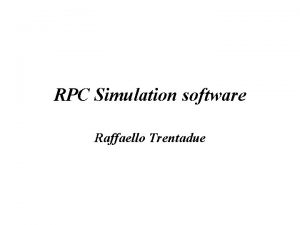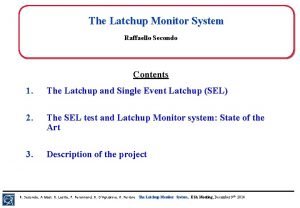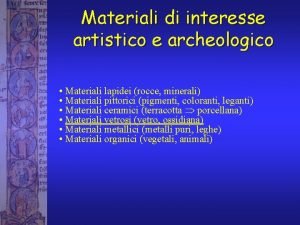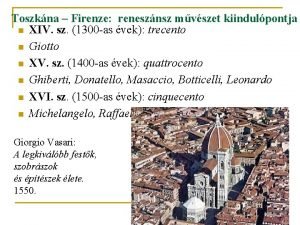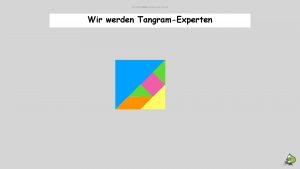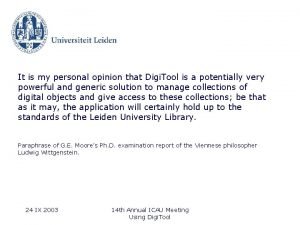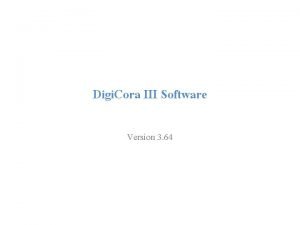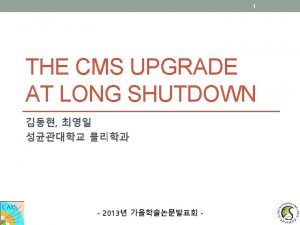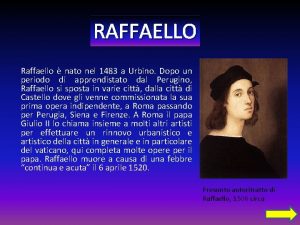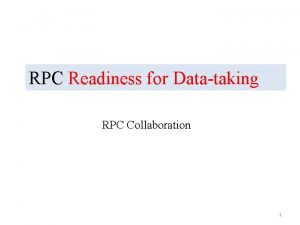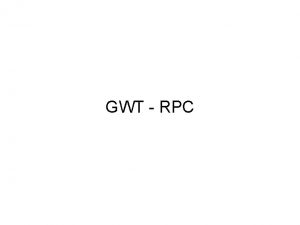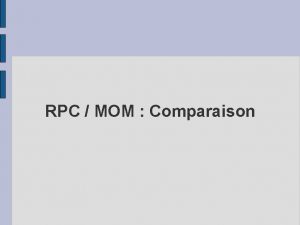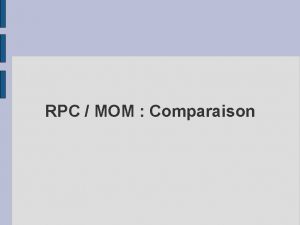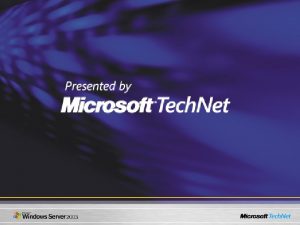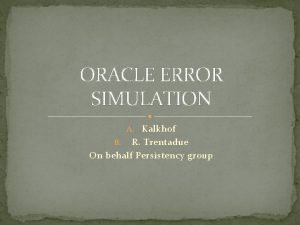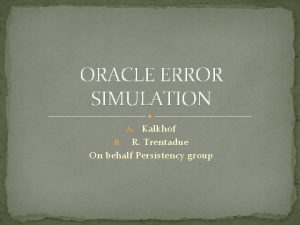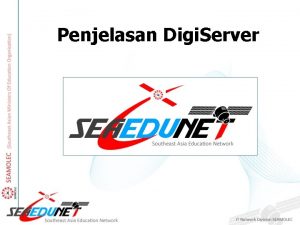RPC Simulation software Raffaello Trentadue RPC Digi producer

















- Slides: 17

RPC Simulation software Raffaello Trentadue

RPC Digi producer RPC Set. Up RPC Digitizer Trivial model Simple model IMPLEMENTED Realistic models RPC Simulation model Parametrized model Average model RPC Synchronizer

Synchronization

Signal delay contribution and uncertainty The RPC Simulation software is officially in the CMSSW_1_7_0_X with the new Synchronizer class. This is important to study in the analysis the bunch crossing effect. Up to CMSSW 16 x no timing information was present in the simulation. The time necessary to form the signal and its final resolution contains other contributions: RPC time resolution = 2 ns (due to mechanical gap tollerance) Electronic Time Jitter = 1. 0 s Signal Propagation time on the strip ( speed of propagation 0. 66 c) Dalay due to the cables (48 to 113 ns)

Delta Time For the single muon sample a small peak is due to few slow secondary electrons. For cosmic muons the synchronizer method failed

At the moment <Read. Out Time> = OC/vpart + electronic delay Sim Read. Out Time = t. o. f. + RPC + electronic delay Delta time = Sim Read. Out Time - <Read. Out Time> |Delta time| < 12. 5 ns Y C BX = 0 O X Bunch crossing bx = -1 Z 25 ns bx = 0 12. 5 ns bx = 1 gatewidth 25 ns CMS global reference frame <Read. Out Time>

Model description • RPCSim. Triv: digitizes only the muon hits by assignment of the strip corresponding to the hit position. The noise is set uniform and homogeneous for all rolls. • RPCSim. Simple: digitizes all hits by assignment of the strip corresponding to the hit position. The noise is set uniform and homogeneous for all rolls. • RPCSim. Param: digitizes all hits using a global parametrization for efficiency, cluster size (exponential distribution is used). The noise is set uniform and homogeneous for all rolls. • RPCSim. Average: introduces a parametrization of cluster size from MTCC experience. • RPCSim. Average. Noise: introduces a parametrization of cluster size from MTCC experience. Detailed noise, strip by strip is implemented • RPCSim. Average. Noise. Eff: introduces a parametrization of cluster size from MTCC experience. Detailed description of efficiency and noise is inserted.

Noise for the old models

Sim. Average newest models Muon 1 2 3 4 5 The strip corresponding to the hit extrapolated by DT reconstruction method has been identified; afterwards it has been divided in five slices in order to produce a cluster size distribution for each of them. From each distribution the mean value has been calculated as function of the slice centre position.

New models of simulation

RPC Set. Up Sim. Muon/RPCDigitizer/data Local Noise (Hz) RPCDet. Id_Noise. dat Geometry Local Efficiency RPCDet. Id_Eff. dat Cl. Size. Tot. dat Cluster size Timing RPCTiming. dat MAPS Roll Parameter vector

Roll name RPCDet. Id Strips

Time performance Noise performance: 10 Hz/cm 2 tot time = 191. 633 s 100 Hz/cm 2 tot. time = 205. 834 s 1000 Hz/cm 2 tot. Time = 280. 491 s Timing Sim. Triv Simple Sim. Param Sim. Average. Noise. Eff Min time 0, 006283 0, 006499 0, 006373 0, 006655 0, 006454 0, 006559 Max time 2, 17385 2, 237310 2, 526670 2, 204150 3, 121270 3, 961170 Avg. time 0, 01257 0, 013649 0, 013746 0, 015445 0, 015850 0, 015316 Tot. time 125, 790 136, 494 137, 458 154, 445 158, 496 153, 157

Validation This new model has been tested in CMSSW_1_7_5 and in CMSS_1_8_0_pre 5, giving the same results. I produced a profile histogram for a roll with different value of efficiency on the strips. 100% 70% 50% 30% Validation between CMSSW_1_7_5 and CMSSW_1_8_0_pre 5 for the usual model RPCSim. Param has been executed getting the same distributions. SEE the Twiki page

RPCSim. Digi. Link The RPCSim. Digi. Link is an object implemented in order to keep an association multimaplike among signal digis and simhit data. This achived goal is very important because it allows to study the more complex cases where more simhits are associated to the same rechit. This happens when delta rays are emitted giving larger cluster size. Rec. Tracks Rec. Hit Collection Digis associated to a given rechit Sim. Hit associated to each digi Sim. Track. Id Many to many association Digi Strip number Sim. Hit Det. Unit. Id Local position Bunch cross. Momentum Process Type Particle Type Sim. Track. Id

Near future Produced several samples with more than 1000000 of events in different conditions of RPC performance: • Model used SIm. Param: Efficiency = 100% Efficiency = 97% Efficiency = 95% Efficiency = 90% Cluster size = 1 Cluster size = 2 Cluster size = 3 Noise = 10 Hz/cm 2 Noise = 1000 Hz/cm 2 • Model used Sim. Average. Noise. Eff One layer per time swiched off

TWIKI PAGE The description of the RPCDigitizer package, the instructions to use it and the Validation results are reported at the following link: https: //twiki. cern. ch/twiki/bin/view/CMS/My. RPCSim. Digi
 Digi producer
Digi producer Raffaello sanzio biography
Raffaello sanzio biography Raffaello scuola
Raffaello scuola Raffaello buonarroti
Raffaello buonarroti Uda legalità scuola primaria
Uda legalità scuola primaria Raffaello willys
Raffaello willys Raffaello
Raffaello Smalto raffaello marrone
Smalto raffaello marrone Raffaello krisztus színeváltozása
Raffaello krisztus színeváltozása Ippolita torelli
Ippolita torelli Raffaello mária eljegyzése
Raffaello mária eljegyzése Atina okulu
Atina okulu Digi ex
Digi ex Digi dino - rotr
Digi dino - rotr Pikas digi
Pikas digi Digiopinion
Digiopinion Digi cora
Digi cora Hyperpoetry
Hyperpoetry
